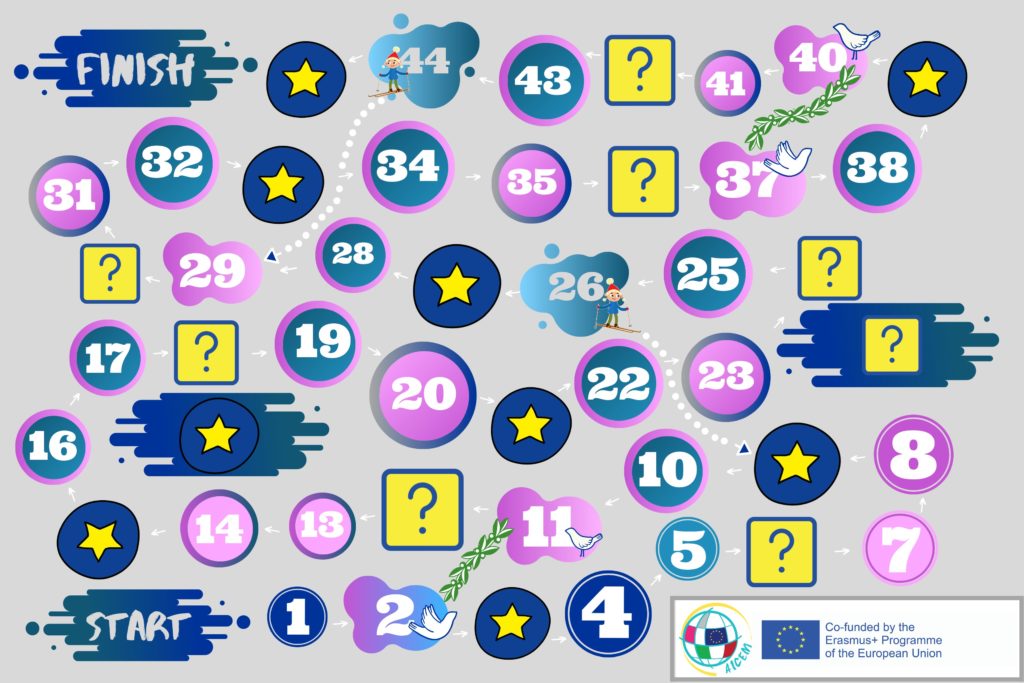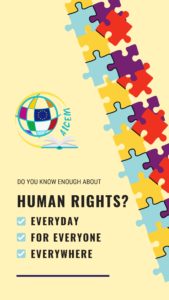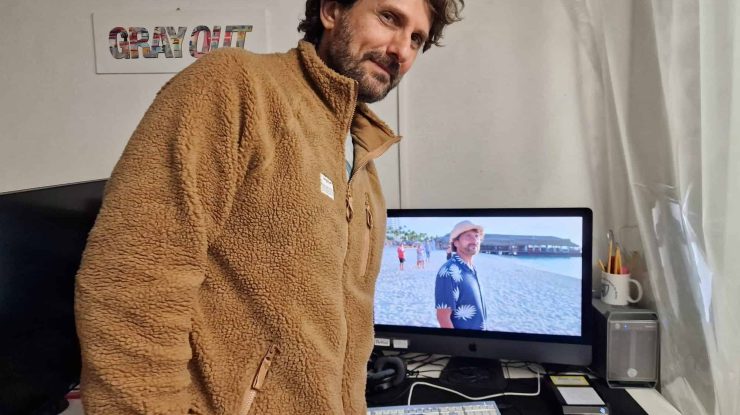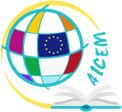A game can be a very enjoyable and useful tool in the process of learning. It can promote successfully the holistic development of a person no matter the age.
What is the best way to learn something new?
From an early age, humans are using games as a learning tool. It is, in fact, a very enjoyable way to learn actively and learning by doing.
Children engage in all kinds of games that help them understand the laws of physics, learn to distinguish colors, memorize songs or count.
Game-based or play-based learning offers children the opportunity to actively and imaginatively engage with people, objects and the environment. While playing, children can organize, build, manipulate, pretend, explore, investigate, create, interact, imagine, negotiate and make sense of their world.
It promotes the holistic (physical, social, emotional, cognitive and creative) development of a child and, depending on how it is used, can also support a wide range of literacy and numeracy skills.
The line between play and learning only emerges as we grow up and enter the formal education circuit.
For adults, playing is seen as an activity that is not very productive, earned as a reward after a job that required a great deal of effort. The commitment and the pleasure of playing would be opposed to the effort required to learn.
But this dichotomous view of play-pleasure and learning-effort ignores the pleasurable effort that can happen in playing, as well as in other learning activities.
Moreover, educational researchers have long provided evidence that adults and children learn in much the same way.
According to scientific research…
According to psychiatrist Stuart Brown, founder of the National Institute for Play in California, nothing turns the brain on as much as play. It reduces our stress levels, improves our relationships with others and keeps our brains alert. Human potential is discovered through play. Even more: play is essential for human progress, because new, daring and innovative concepts germinate in brains used to playing with ideas.
The American Federation of Scientists [“A Meta-Analytical Examination of the Instructional Effectiveness of Computer-Based Simulation Games,” 2011, Tracy Sitzman] says games are the best way to learn. Through play, learners improve their performance, increase their effort and increase their knowledge through practice. Concretely, here is what the figures show:
Game-based learning compared to traditional training …:
- It can increase the student’s self-confidence by up to 20%.
- It increases conceptual knowledge by 11%.
- It increases the ability to retain what is learned by 90%.
- It provides 20% additional practical knowledge.
- It gets up to 300% more tasks done.
Ultimately, through play, learners (whether adults or just students) maintain a positive mental state, which would not be possible with traditional methods.
Games: a tool in Non-formal education
A methodology that uses games and playing as fundamental tools is Non-formal education, where the question of interest is put first: “How to make a learning process interesting for students and therefore more efficient?” – that’s the main objective of non-formal education,
built in a way to stimulate different parts of the brain: develop and work on memory, attention and planning skills, the ability to resolve conflicts, etc.
The approach in AICEM
As an example, in AICEM organization game-based learning method is used and non-formal education is the most relevant methodology. Many topics the association dedicated itself to are spread and treated through it.
Different manuals lead (especially from Council of Europe) the way of this path, but the association itself got involved personally in the creation of some useful games, born from the theory of the importance of games and playing as educational tools.
Here some examples:
Human rights Game
One of the main purposes of AICEM is to spread awareness about the importance of defending and promoting Human Rights.
For this reason, a game for young people, with the aim of learning about all the 30 Human Rights of the Universal Declaration, was invented. As in a memory game, participants should remember the location of the cards thus remembering what is written on the card (which human right) and take two similar while all cards are laying with a face down. And after, of course, create a discussion around it.
EuroGame:
As an organization involved in European exchanges and mobility of young people, AICEM gives great importance to share information and knowledge about Europe and its possibilities.
EuroGame is a board game created for young people to learn and know more about the history of Europe. The principle of the game is to answer questions and do challenges about Europe and then move forward in order to reach the finish line.
Not just a game but a general approach
To explain even more the importance of play in the educational path, here’s some experiences from the everyday activities of two AICEM’s volunteers, currently in Mugnano di Napoli.
The volunteers are daily working with kids in a local casa famiglia, providing a very wide range of activities.
They have shared some of their educational adventures with us:
“One of our goals and objectives in our work with kids is teaching English. As it is known, children are the ones that can’t do something if they are not interested in it and there is no way to force them, they simply can’t hold the focus. So, it’s extremely important to make children truly interested in whatever they are doing. For this reason, we have started to use all types of games to make a language learning process more fascinating for them.
We use different types of games, according to their interests and generally organized around ‘group tasks’, making children also socially active:
-Playing with toys (like dolls)
Dolls games to teach children adjectives (like beautiful/ ugly etc) and names of clothes. We make different outfits, questioning if it’s beautiful or ugly and asking if we need to change any part of the outfit.
–Creating something with hands (crafts)
Besides educational activities we also provide artistic activities. While we make crafts we ask the children to name all colors that they are using, only in English. That’s how they learn colors and materials. It became an active game for them, where they are creating and substituting words from their language to words in English.
-Role-playing
This is something suitable for the youngest ones: they are imagining themselves as someone they really like, for example superheroes, and it is part of their mission to learn a word or to say something in English, because a villain only understands English. With this method you are creating a whole other world for a child, in which he/she is stimulated in learning by an imaginative methodology.
-Physical activity (dancing)
One more thing that we are doing are dance classes. We say directions to them, parts of the body and numbers (counting) in English while moving. Physical activity and interest of children in dancing makes learning truly fun and easy.
After many months spent with children, we can say that games truly improve the process of learning, as the process is enjoyable, they can focus much longer and be willing to learn. In this way, learning doesn’t seem like something boring, it’s always active, social and full of space to create.”
To sum up…
Like the younger ones, adults need to feel stimulated when working to achieve greater mental agility. Non-formal education offers active learning, learning by doing, learning by games, which contains physiological benefits associated with the stimulation of the brain, and it delays natural aging.
It also drives decision making, improving the cognitive function and helping people to learn valuable skills and lessons applicable to real life.
Games for training, however, favor skills as important as observation, motivation, overcoming criticism, strategic thinking and, of course, soft skills. Among the most important benefits of games for training is collaborative learning.
People who learn through playing, usually do so in a collaborative environment in which they work together to achieve a goal.
This is one of the reasons why non-formal education appeared and is putting forward the necessity of game/play based learning.
The main advantage of non-formal education over traditional training and other methodologies is undoubtedly the unique model it offers. We are referring to the learning of soft skills in this process of studying (decision making, critical thinking, communication skills, leadership, people management, productivity, etc.) which, without the possibilities of these new methodologies, would be very difficult to achieve.
Just like children, we need to have an interest not to be just forced, but to put our mind and heart into what we are doing to have the maximal output.
di Manon Laurin ed Elizaveta Vasilevska













